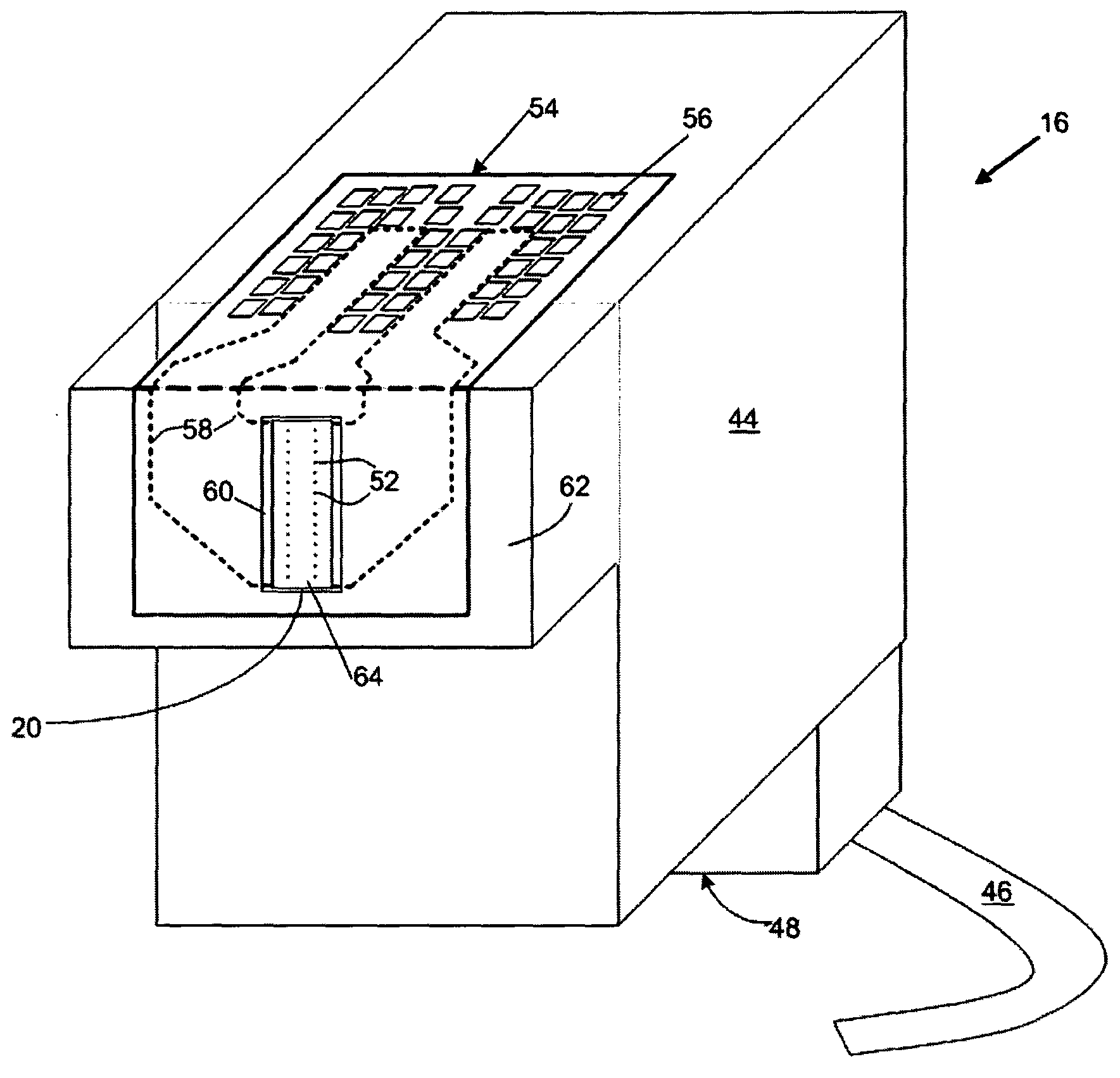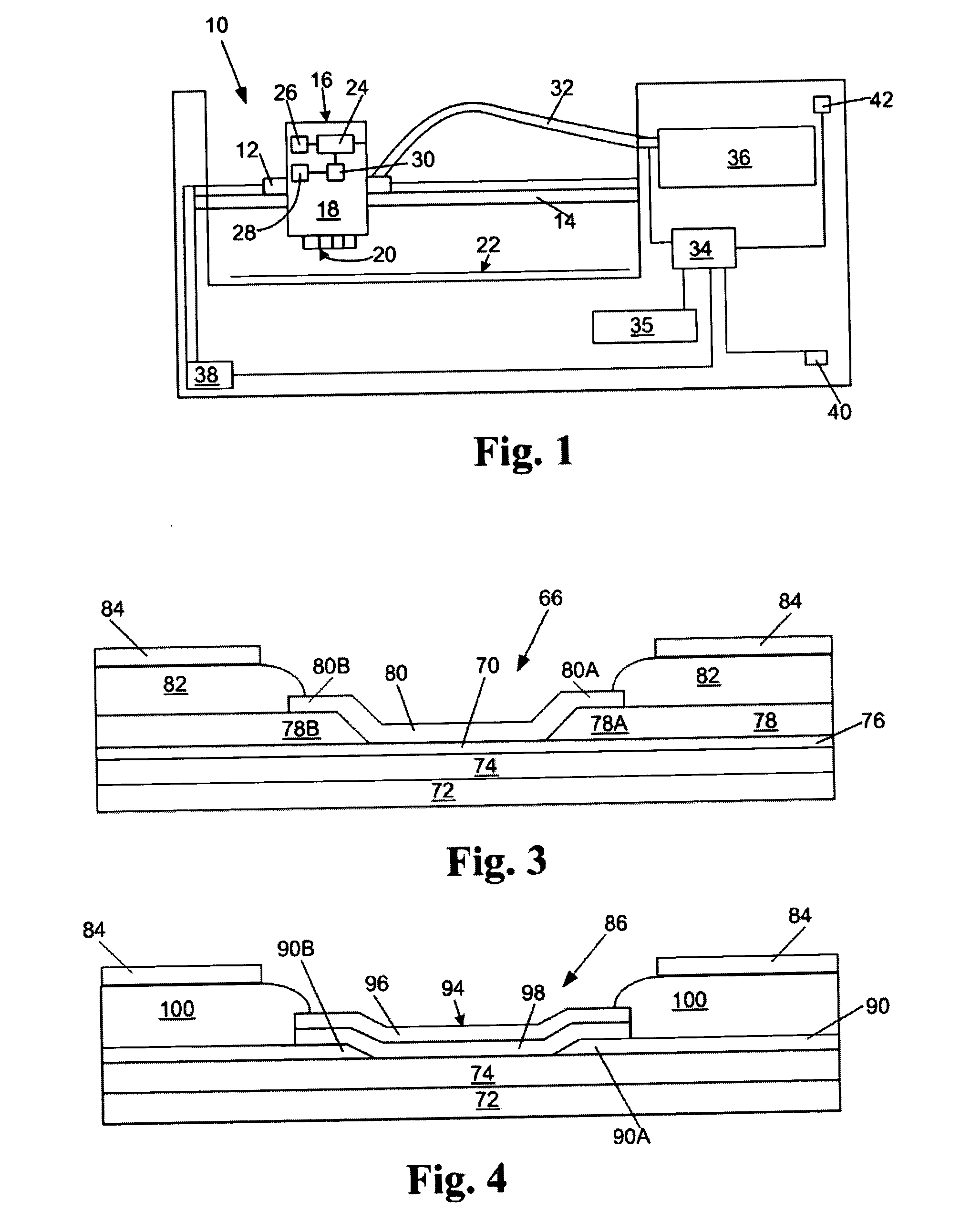Ink jet printheads
a technology of ink jet printers and printheads, which is applied in the direction of printing and inking apparatus, etc., can solve the problems of time-consuming, art ink jet printers suffer from a number of deficiencies, and the ability to quickly print a high resolution grain free image, etc., to achieve cost savings, enhance print quality, and prolong the life
- Summary
- Abstract
- Description
- Claims
- Application Information
AI Technical Summary
Benefits of technology
Problems solved by technology
Method used
Image
Examples
Embodiment Construction
[0033] The present invention is directed toward a novel combination of new and prior art ink jet printing concepts that is adapted to provide a faster, more reliable ink jet printer that is less expensive to produce than prior art designs. As shown in FIG. 1, an ink jet printer 10 constructed in accordance with the present invention utilizes a printhead carriage 12 that is movably mounted on a support member 14. A semi-permanent printhead cartridge 16 is installed on the printhead carriage 12. While a single printhead cartridge 16 is shown, it will be readily apparent to those skilled in the art that a color ink jet printer may utilize multiple printhead cartridges each having an ink reservoir containing one of the primary colors selected from cyan, magenta, yellow, and black, or a single printhead cartridge containing a multi-color printhead and associated ink reservoirs for the primary colors. However, for purposes of simplicity, the printhead cartridge 16 in FIG. 1 is shown with ...
PUM
 Login to View More
Login to View More Abstract
Description
Claims
Application Information
 Login to View More
Login to View More - R&D
- Intellectual Property
- Life Sciences
- Materials
- Tech Scout
- Unparalleled Data Quality
- Higher Quality Content
- 60% Fewer Hallucinations
Browse by: Latest US Patents, China's latest patents, Technical Efficacy Thesaurus, Application Domain, Technology Topic, Popular Technical Reports.
© 2025 PatSnap. All rights reserved.Legal|Privacy policy|Modern Slavery Act Transparency Statement|Sitemap|About US| Contact US: help@patsnap.com



